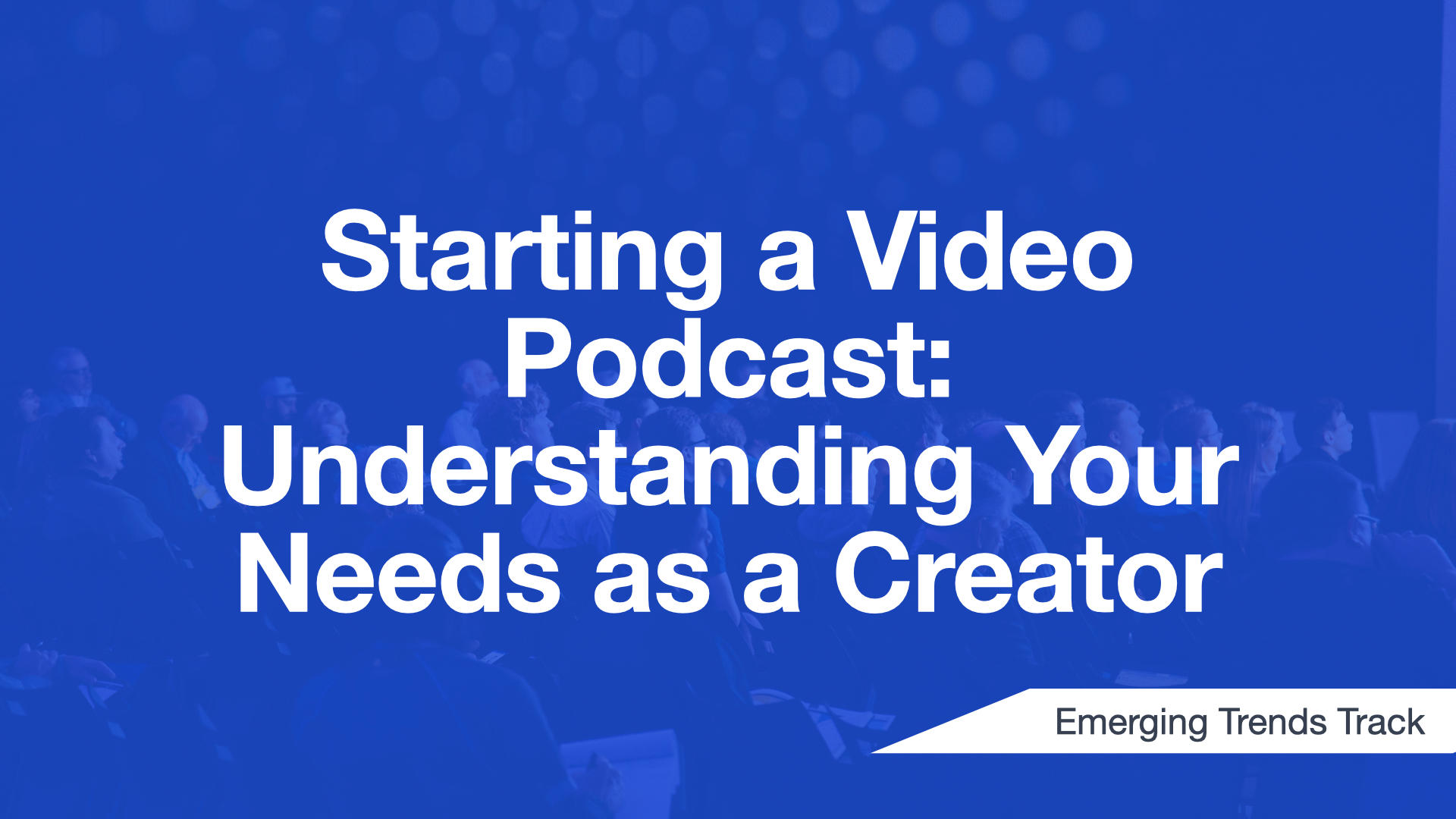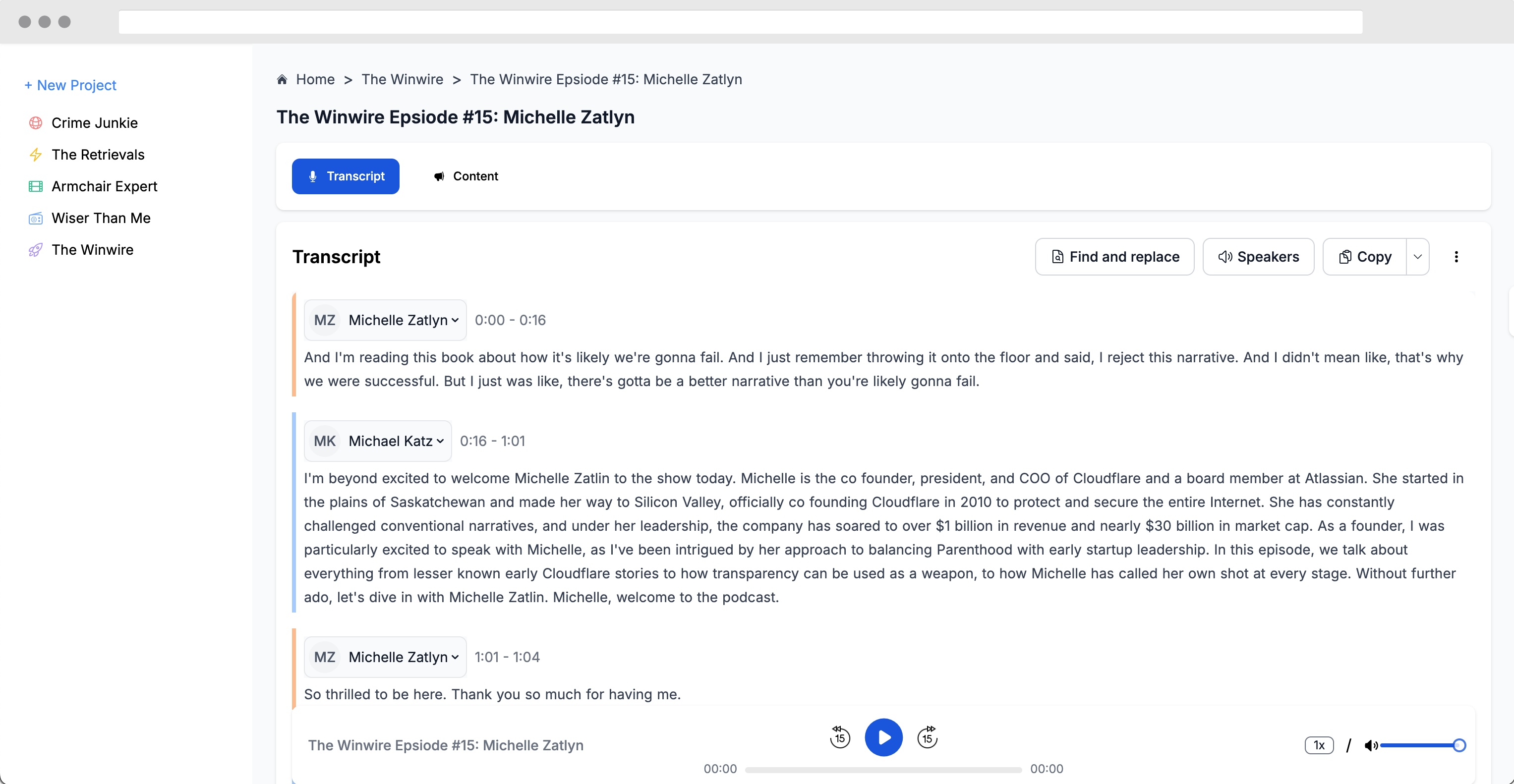Starting a Video Podcast: Understanding Your Needs as a Creator

Key Takeaways
Authenticity is Key: Authenticity in content creation is crucial. Audiences connect more deeply with genuine storytelling rather than content driven by trends or popularity.
Engagement Strategies: Engaging with the audience through social media, live shows, and direct feedback mechanisms like Discord or surveys can significantly enhance audience connection and content relevance.
Efficient Workflows: Utilizing templates, automation tools, and collaborative platforms like Airtable and Frame.io can streamline podcast production, making it more efficient and manageable.
Transitioning to Video: Transitioning from audio to video requires a shift in thinking to engage visually. This includes using hooks, b-roll, and graphics to compete in the visual content space.
Community and Collaboration: Leveraging community resources and collaborations can help overcome challenges in podcasting, from technical support to content creation.
Overview
The panel, moderated by Indeana Underhill, co-founder of Cinematography for Actors, focused on the practical, technical, and creative aspects of video podcasting. Key speakers included Cheryl Ottenritter, an audio content creator, Brian Cottington, a video designer and editor with Libsyn, Steve Lack from Steve Lack Audio, and Nagier Chambers, owner of Big Gold Belt Media.
They emphasized the importance of authenticity in connecting with audiences, leveraging social media and community engagement, and the necessity of understanding one's audience. The discussion also covered technical workflows, with recommendations for tools like OBS Studio, Streamyard, and Frame.io to streamline production.
They debunked myths about the high costs and complexities of video podcasting, highlighting that success doesn't require top-tier equipment but rather consistency, engagement, and leveraging community resources. The panelists encouraged podcasters to start small, use available resources, and gradually expand their capabilities.
Core Concepts
Authenticity in Content Creation
Authenticity in content creation was emphasized as a fundamental principle for connecting with audiences.
Key Points:
Authentic storytelling resonates more with audiences than content created solely for popularity.
Staying true to one's voice and passion is essential for maintaining audience trust and engagement.
Authenticity helps in building a loyal community around the podcast.
Examples:
Cheryl Ottenritter highlighted the importance of making decisions based on authenticity rather than what might be popular.
Nagier Chambers discussed how staying true to the initial passion for combat sports helped in maintaining a genuine connection with the audience.
Quotes:
You have to be authentic in your storytelling. - Cheryl Ottenritter
People see that authenticity through folks, and they want to connect with that. - Nagier Chambers
Effective Audience Engagement
Engaging with the audience through various platforms and strategies was identified as crucial for building and maintaining a podcast community.
Key Points:
Social media platforms like Instagram and Discord can be used to engage directly with the audience.
Live shows and YouTube premieres offer interactive ways to connect with listeners.
Understanding the audience's needs and preferences through surveys and direct interactions helps in creating relevant content.
Examples:
Brian Cottington used Instagram and Discord to gather feedback and engage with his audience.
Steve Lack emphasized the importance of understanding the audience through social interactions and surveys.
Quotes:
Engaging with the audience directly and saying, hey, I'm thinking about making an episode about this. What do you all think? - Brian Cottington
You have to reach out to them on social, do surveys, do events like this, talk a lot, really understand what it is that your audience is looking for. - Steve Lack
Streamlined Workflows and Automation
Efficient workflows and automation were discussed as essential for managing podcast production, especially for those handling multiple shows.
Key Points:
Using templates and automation tools can significantly reduce the time and effort required for podcast production.
Collaborative platforms like Airtable and Frame.io help in managing tasks and ensuring smooth communication among team members.
Automating repetitive tasks, such as scheduling and file uploads, can prevent bottlenecks and improve overall efficiency.
Examples:
Steve Lack described using templates and Airtable to manage multiple podcasts efficiently.
Cheryl Ottenritter shared how automation in scheduling and asset management helped streamline their workflow.
Quotes:
We use templates from a technical standpoint, we have a template set up for each show so that all we have to do is load the content. - Steve Lack
Anything you can do where you can not have to hit that send button on the email is my big suggestion. - Cheryl Ottenritter
Conclusion
The discussion provided valuable insights into the importance of authenticity, effective audience engagement, and streamlined workflows in podcasting. Authentic storytelling helps in building a loyal audience, while engaging with listeners through various platforms ensures content relevance and community growth. Efficient workflows and automation tools are essential for managing podcast production, especially for those handling multiple shows. Transitioning to video requires a shift in thinking to engage visually, but it can significantly enhance discoverability and audience connection. Leveraging community resources and collaborations can help overcome challenges and enhance the overall podcasting experience.
Food for Thought
How can podcasters balance authenticity with the need to attract a larger audience?
What are some innovative ways to engage with the audience beyond traditional social media platforms?
How can small podcasters leverage community resources and collaborations to enhance their content and production quality?
Reference Tools, Platforms, and Resources
Airtable: For managing tasks and ensuring smooth communication among team members.
Frame.io: For collaborative video editing and review.
OBS Studio: Free and open-source software for video recording and live streaming.
Streamyard: For live streaming and video production.
Descript: For transcription and audio editing.
Hindenburg: For audio editing and production.
Pro Tools: For professional audio editing.
Nuendo: For audio post-production.
Studio One: For music creation and production.
Riverside: For remote podcast recording.
Ecamm: For live streaming and video production.





